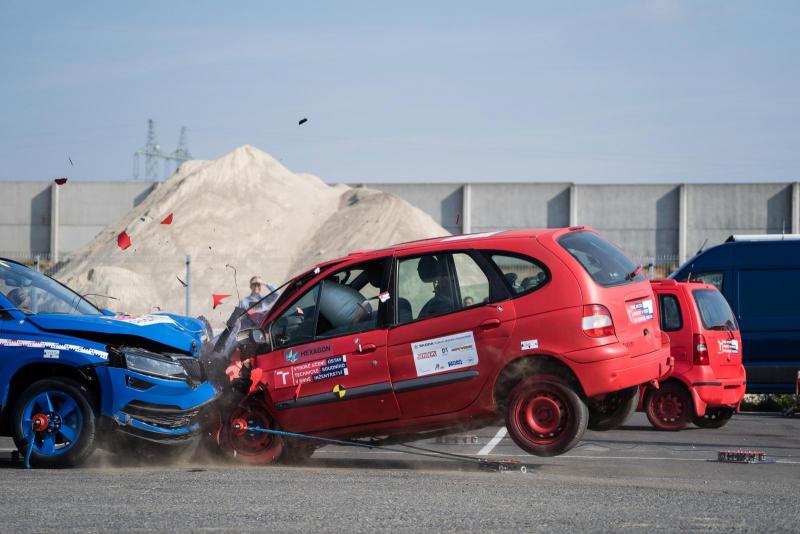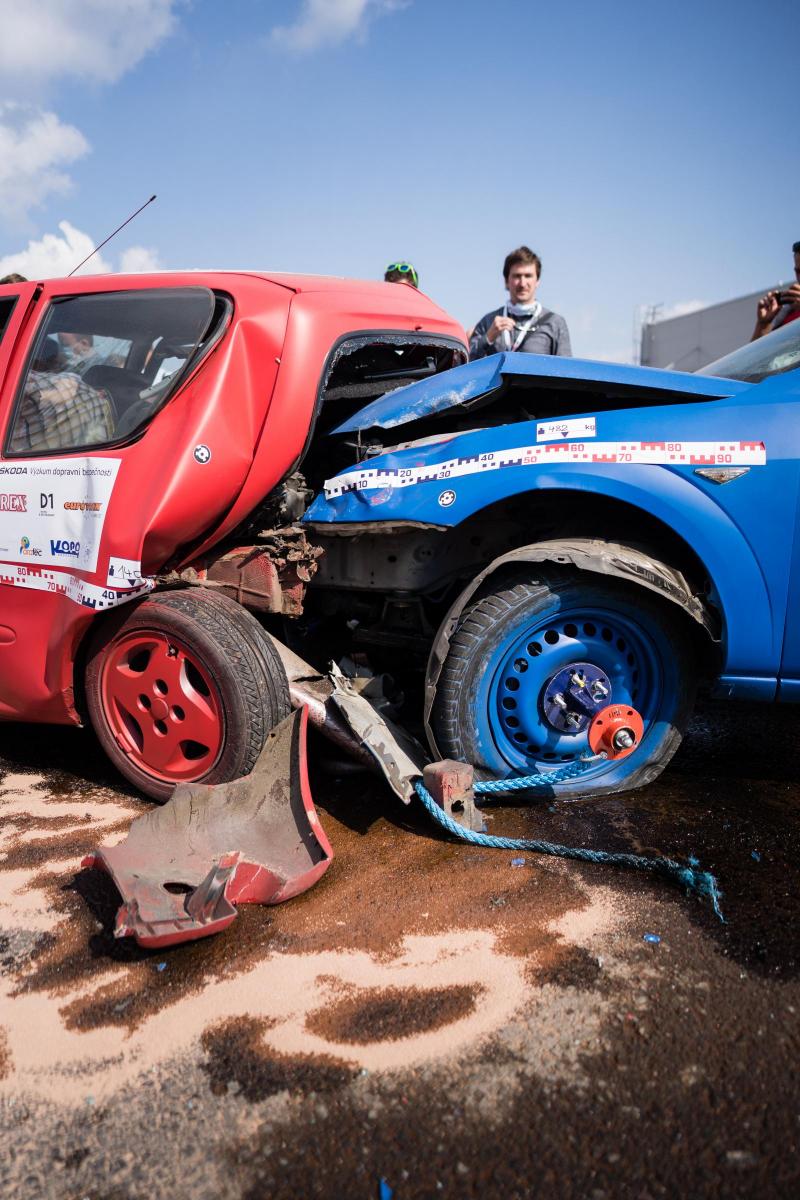Ideas and discoveries
Unique Damage Catalogue maps dozens of traffic accidents. It will help forensic experts and insurance companies.

A practical guide to methods for documenting and analyzing vehicle damage, as well as a catalog of characteristic damage types. These are the outcomes of a project jointly developed by the Transport Research Centre and the Institute of Forensic Engineering at BUT. The police, claims adjusters, and forensic experts now have access to practical tools that assist in accident recording and analysis. They can also help uncover insurance fraud.
Under the auspices of the Transport Research Centre and in cooperation with the Institute of Forensic Engineering at BUT, a team led by Kateřina Bucsuházy and Martin Bilík carried out a project offering modern methods for documenting and analyzing vehicle damage. The three-year TAČR project combined unique insights from both institutions in the field of accident analysis. “The Transport Research Centre has long conducted in-depth accident analysis, where we go directly to real traffic accidents and document them from the perspectives of the person, infrastructure, and vehicle. We therefore have experience investigating accidents directly at the scene under various conditions. At the Institute of Forensic Engineering, we also conduct crash tests, allowing us to test different methods and approaches in simulated conditions and validly compare their limits,” explains Bucsuházy. Based on data obtained in both simulated and real conditions, the team created a Damage Catalogue as part of the project. “It is a public, specialized database intended primarily for professionals,” says Kateřina Bucsuházy.
The catalog consists of two parts. “One part is a database of characteristic damage types, which includes various types of accidents and damage. There are real accidents, crash tests, and experiments in which we deliberately attempted to create specific types of damage. The catalog also includes accidents involving pedestrians, cyclists, and motorcyclists, collisions between two vehicles, or crashes into fixed obstacles such as trees or guardrails,” Bucsuházy describes.

In addition to the catalog, a book was created, focusing on various methods of documenting and analyzing vehicle damage. “The book is called Vehicle Damage Analysis: A Guide to Documentation Methods and Deformation Energy Quantification and summarizes different methods that can be used in documenting and analyzing vehicle damage. We also focused on the limitations of these methods. The book is designed as a practical guide, and we tried to ensure it wasn’t just a dry theoretical text. We included various case studies, both positive and negative examples from practice, to show how documentation should and shouldn’t be done and what it can lead to,” says Bucsuházy.
The catalog and book are intended mainly for professionals engaged in traffic accident analysis—insurance adjusters, forensic experts, and police officers. “For many accidents they investigate, experts often lack sufficient documentation and must deduce the correlation of damage based only on limited available information or their own experience and experiments. So, we aimed to create the catalogue as a databank of different scenarios to help visualize what damage might look like in specific types of collisions,” explains Kateřina Bucsuházy.
In addition to assessing accident scenarios, the catalog of characteristic damage can also help detect potential attempts at insurance fraud. “Thanks to the catalogue, experts can better assess whether the accident could really have occurred in the described manner and whether the nature and extent of damage match, or whether someone deliberately exaggerated the damage,” notes Kateřina Bucsuházy.
The database allows filtering and searching. “I can look up, for example, all tree collisions. Or I can specify a particular vehicle type, its year of manufacture, impact speed, and damage location. In pedestrian accidents, it is also possible to examine the correspondence between vehicle damage and pedestrian injuries,” explains Bucsuházy.
A practical workshop was also organized for future users such as adjusters, experts, police officers, and professionals in the field of traffic accident analysis. “We presented the project results. We also had damaged vehicles available on which we demonstrated different documentation methods, such as 3D scanning and mobile phone use, along with their limitations,” describes Kateřina Bucsuházy.
You can register for the database and view a sample accident free of charge. The authors plan to update the catalogue regularly. Additionally, there are plans to expand abroad. “The number of forensic experts in the Czech Republic is not very large. Therefore, we would like to explore its applicability within Europe,” concludes Bucsuházy.
(zeh)
How does the age of tyres affect road safety? The answer will be offered by research from the IFE
A hundred-year-old water system and a missing sewer system. Nevertheless, Kamenka is one of the most expensive districts in Brno
Historical legacy affects the value of cultural monuments. For example, the distance from the stop has an influence
Where does a motorcyclist look while riding? The answer will be offered by research from IFE
Women from BUT who move the world of science and technology
